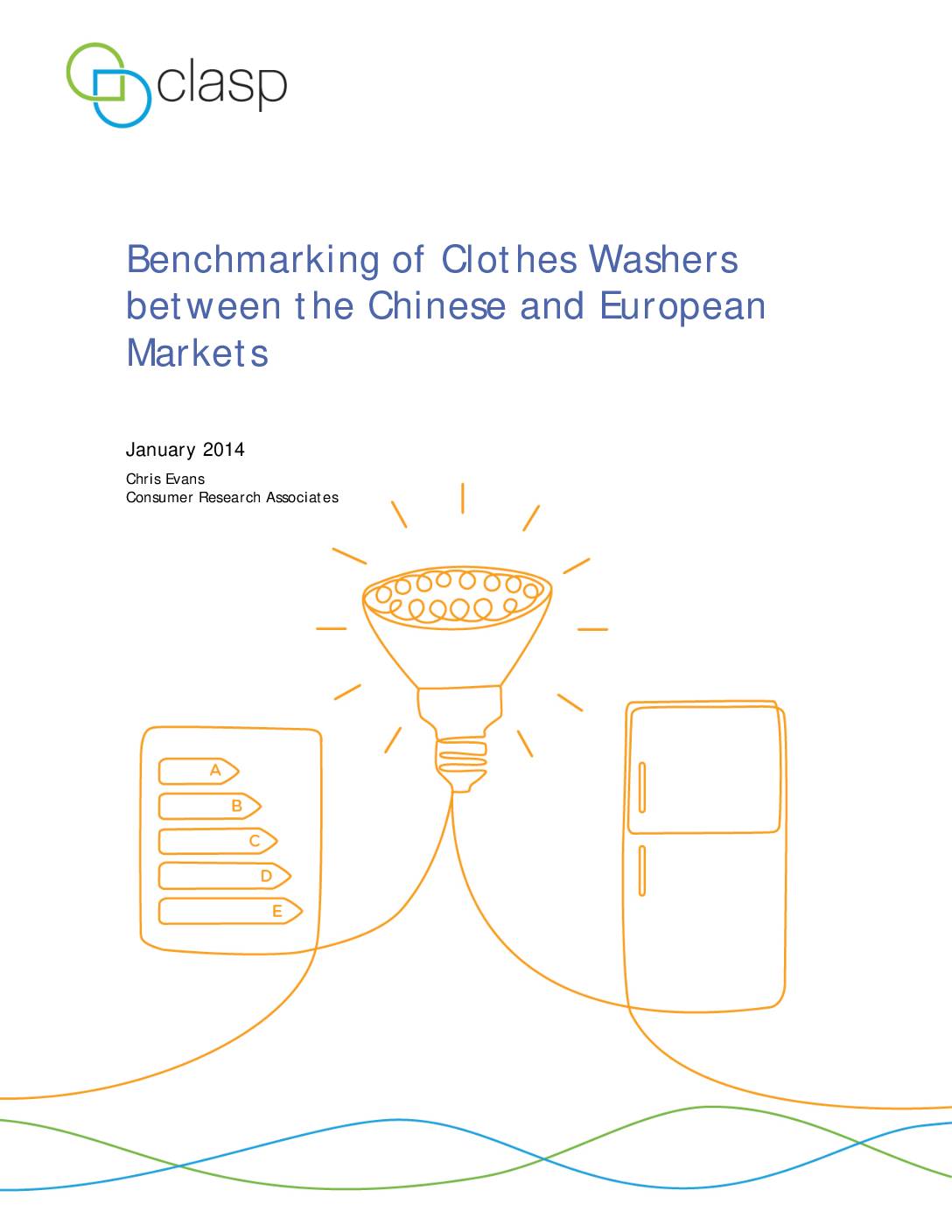Clothes washers are an important product, as households in China increasingly consider them a necessity. As income levels rise in rural areas, the demand for washing machines continues to grow. It is estimated that clothes washers consume approximately 15 TWh of energy per year in 2030 – enough to power more than 11 million of Chinese homes for a year. Such projections demonstrate the need to address the energy efficiency and overall consumption of washing machines.
Since China’s first minimum energy performance standard for domestic clothes washers was issued in 2004, rapid technology development and government aid through financial incentives have significantly driven up the energy efficiency levels of products sold on the Chinese market. The 2004 standard has not kept pace with market shifts, and a more stringent standard is required to continue pushing the clothes washer market towards higher energy efficiency.
In 2012, CLASP and Consumer Research Associates partnered to conduct a benchmarking comparison of clothes washer energy efficiency performance, policies, and test methods. The main objective was to assist the China National Institute of Standardization (CNIS) in revising efficiency requirements for future clothes washer energy performance standards in a transparent and technically valid manner that is consistent with international best practices.
This study also provided CNIS with an opportunity to compare Chinese test methodology, laboratory practices and EE policies with those in the EU. The results of the comparison will assist CNIS in determining whether the adoption of an international standard or test method could become appropriate for China in the future.
Due to the absence of reliable data about the Chinese market, a benchmarking comparison of clothes washers between China and other economies has not been undertaken previously. For the purposes of this study, CLASP mapped the Chinese and EU clothes washer markets, selected representative machines, and conducted cross-market testing for the first time. At CNIS’ request, CLASP also provided training to CNIS testing staff to conduct testing based on EU methodology so that it could be replicated in CNIS’ clothes washer test laboratory. A training component was therefore included in the testing phase for this study.
The comparison of energy efficiency labeling specifications in both the Chinese and EU markets for the same washer samples demonstrates two things:
Firstly, it shows that there is a close correlation between the test standards being applied in both markets for front-loading washers. These results give CNIS confidence that adopting test methods used international or in the EU would be likely to be acceptable to domestic manufacturers.
Secondly, the comparison demonstrates that China’s current EE labeling thresholds for front-loading washers are on par with those in the EU. It is important to note, however, that front-loading washers only account for about 32% of China’s clothes washer market.
Share this

Sectors: Equipment and appliances, Renewables, Transport
Country / Region: Asia, China
Tags: benchmarking, energy, energy efficiency, financial incentives, incentives, industrial benchmarking, international development, minimum energy performance standards, performance standards, technology developmentKnowledge Object: Publication / Report
Published by: CLASP
Publishing year: 2014
Author: Chris Evans
